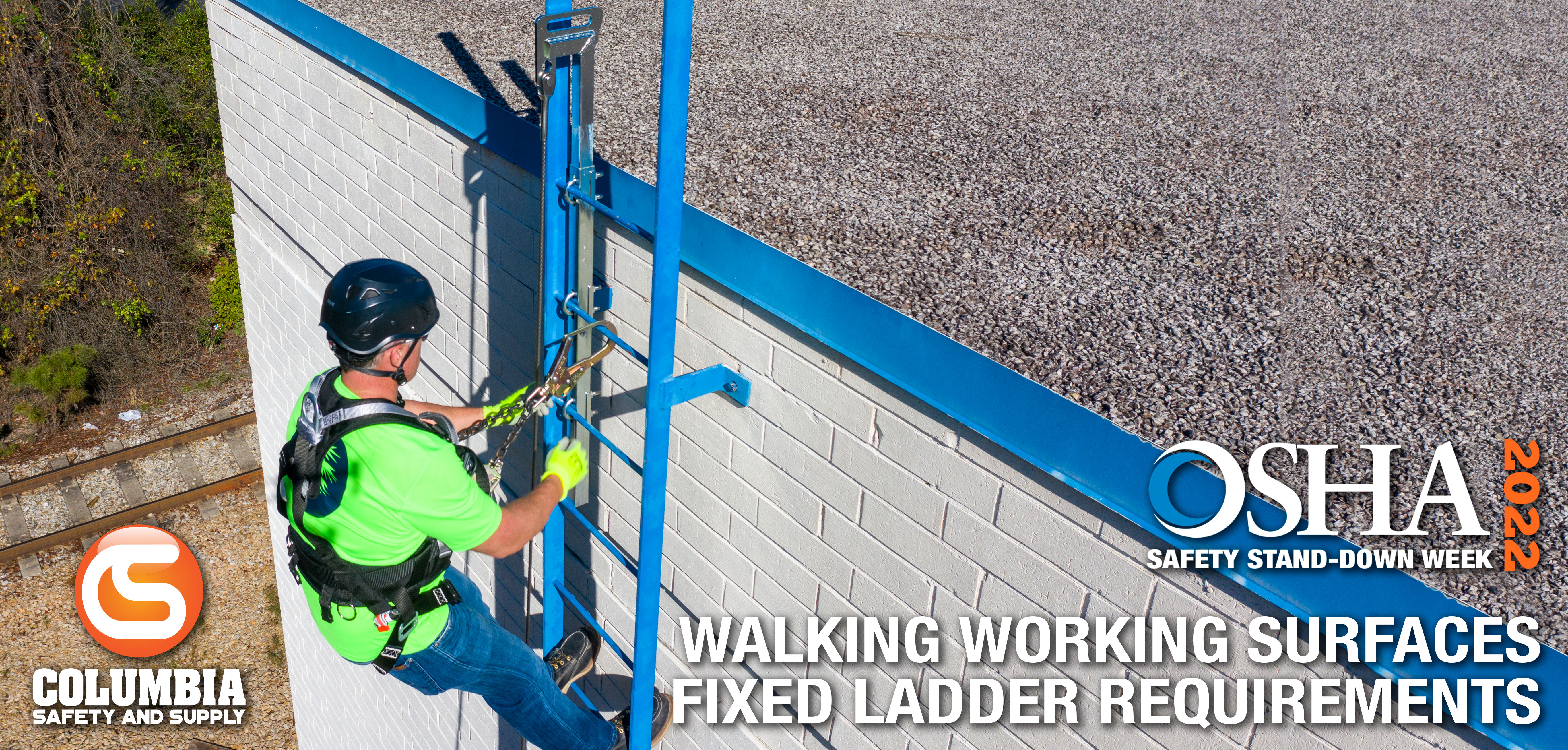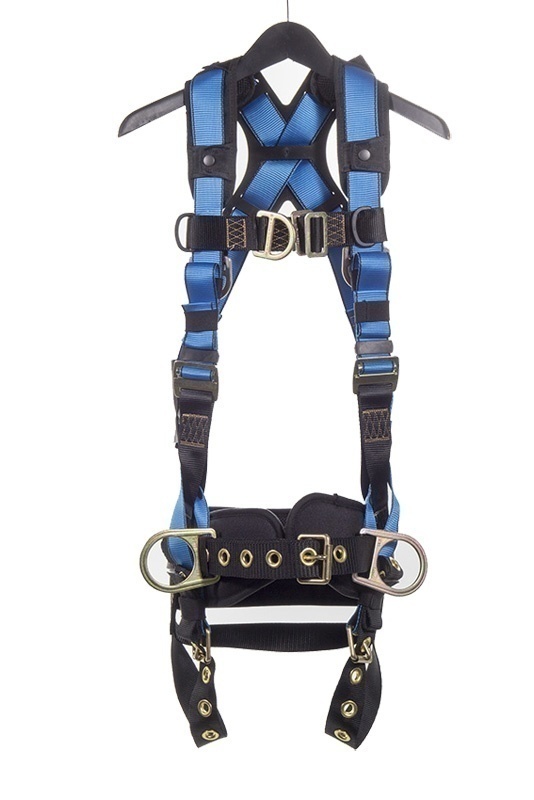YOU HAVE NO ITEMS IN YOUR CART.
Featured Manufacturers
Columbia Safety and Supply Safety Stand-Down Week 2022: Going Up
Day One
OSHA 29 CFR Part 1910 Subpart D Overview and How It Applies to Fixed Ladders

Why Was the Standard Overhauled?
Over the course of 6 years prior to OSHA 29 CFR Part 1910 Subpart D, more commonly known as the updated Walking Working Surfaces Standard, being established there were an average of 261 fatal falls to a lower level annually in general industry. This does not include falls in the construction industry. During that same period there were over 48,379 lost-workday injuries reported. Slips, trips, and falls on the same level were reported in more than 125,000 injuries a year. This new standard overhaul is designed to drastically reduce these injuries and deaths.
What Are Walking Working Surfaces?
What Does This Change Mean for Fixed Ladders?
Existing requirements on portable and fixed ladders have been combined. This covers all ladders used in general industry except for those that are designed into a machine or piece of equipment, or used only for firefighting or rescue operations.
As of 2018, all new fixed ladder systems greater than 24 feet in height must be equipped with a ladder safety system or personal fall arrest system. These commonly come in a couple different forms:
Fall Protection For Ladders
In the above video, our Gear Experts chat with 3M about what these options can look like. One thing that was mentioned but not discussed in detail was what a “fall arrester” actually means when used with a Climbing Ladder Fall Arrest System (CLFAS). This is covered by the ANSI Z359.16 Standard.
Overview and Highlights of ANSI Z359.16
- The standard is intended to specifically address CLFAS systems.
- The CLFAS shall allow at least two persons, but not more than four persons, to climb simultaneously.
- Design and installation of mountings shall not reduce the strength of the climbing ladder.
- Full body harness used with CLFAS shall meet the requirements of ANSI/ASSE Z359.11.
- A competent person shall determine the appropriate full body harness for use with the CLFAS and in accordance with the manufacturers’ instructions.
- The carrier sleeve shall be supplied with a linkage to couple the sleeve to the harness connection elements.
- The connection linkage length as measured from the carrier to the bearing point of the harness connection shall not exceed 12 inches.
- If the carrier sleeve is designed to be removable from the carrier, it shall be removable only by at least two deliberate manual action(s) by the user.
- The sleeve shall include an anti-inversion device to prevent inadvertently installing the carrier sleeve upside down on the carrier.
- Carrier sleeve movement shall be automatic and shall not require continuous manual intervention during climbing or descending.
- Carrier sleeves must be automatic in their locking (fall arrest) function, and shall include a second independent locking mechanism which cannot be disengaged or interfered with during a fall.
- The maximum movement of the carrier sleeve along the carrier shall be no more than 20 inches when locking on the carrier in a fall event.
- The average arrest force shall not exceed 1,350 pounds (6kN) and the maximum arrest force shall not exceed 1,800 pounds (8kN).
Questions or Need More Info?
If you have any questions regarding the above information or need more insight into safety or fall protection in general, reach out to our Gear Experts®! Click here to contact our team, or use the instant chat feature in the lower right hand corner of your browser screen. Also be sure to connect with us on social media to keep up with all of our latest content.










